Iliotibial Band Syndrome
Read More >
Iliotibial band syndrome is a painful condition that affects the knee. This condition is effectively treated and resolved with exercises. Rehabilitation exercises will include strengthening and flexibility exercises.
Using exercises to target specific muscle groups is an effective way to strengthen. Strengthening programmes should be specific to you. This may be to focus on muscles that are weaker or needed for the sports you enjoy.
Muscle imbalances can develop easily, especially with repetitive sports such as running. The body can develop strength and endurance in specific muscles while other muscles weaken. Over time, this can become problematic and can increase the risk of injuries such as iliotibial band syndrome.
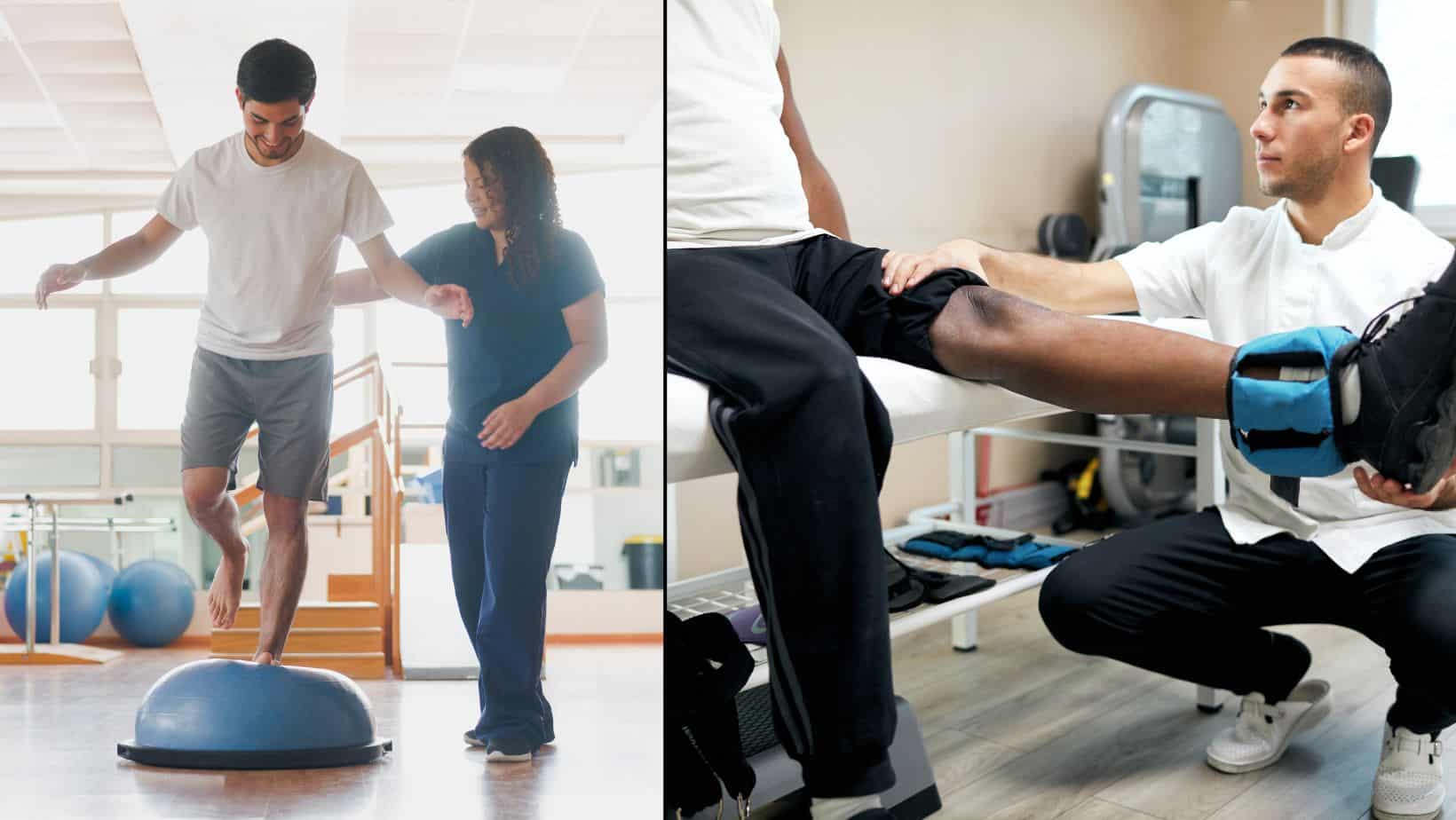
Here are some examples of exercises that your physical therapist might recommend. These exercises focus on muscles that are commonly found weak in individuals with iliotibial band syndrome. A specific programme designed for you by a physical therapist however will be the best for you.
Strengthening exercises should be done 2-3 times per week for 3-4 sets of 12-15 repeats.
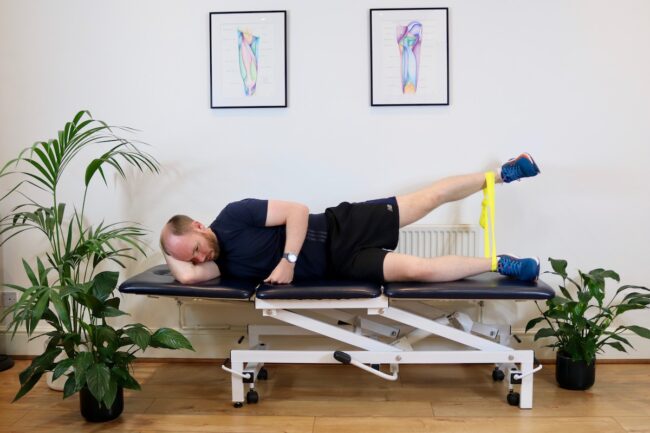
Lying on your side, keep your lower leg bent to offer stability. Roll your pelvis forwards to your buttocks is uppermost, and with your top leg in line with your body. Raise the top leg in an up and backward direction (to abduct and extend your hip), keeping your knee straight.
You should feel your gluteal muscles working at the side of your buttocks.
Lying on your side with both legs bend, 20º at your hip and 90º at your knee. Roll your pelvis forwards to your buttocks is uppermost. Lift your top knee up, keeping your feet together and on the floor and your pelvis rolled forwards.
You should feel your gluteal muscles working at the side of your buttocks.
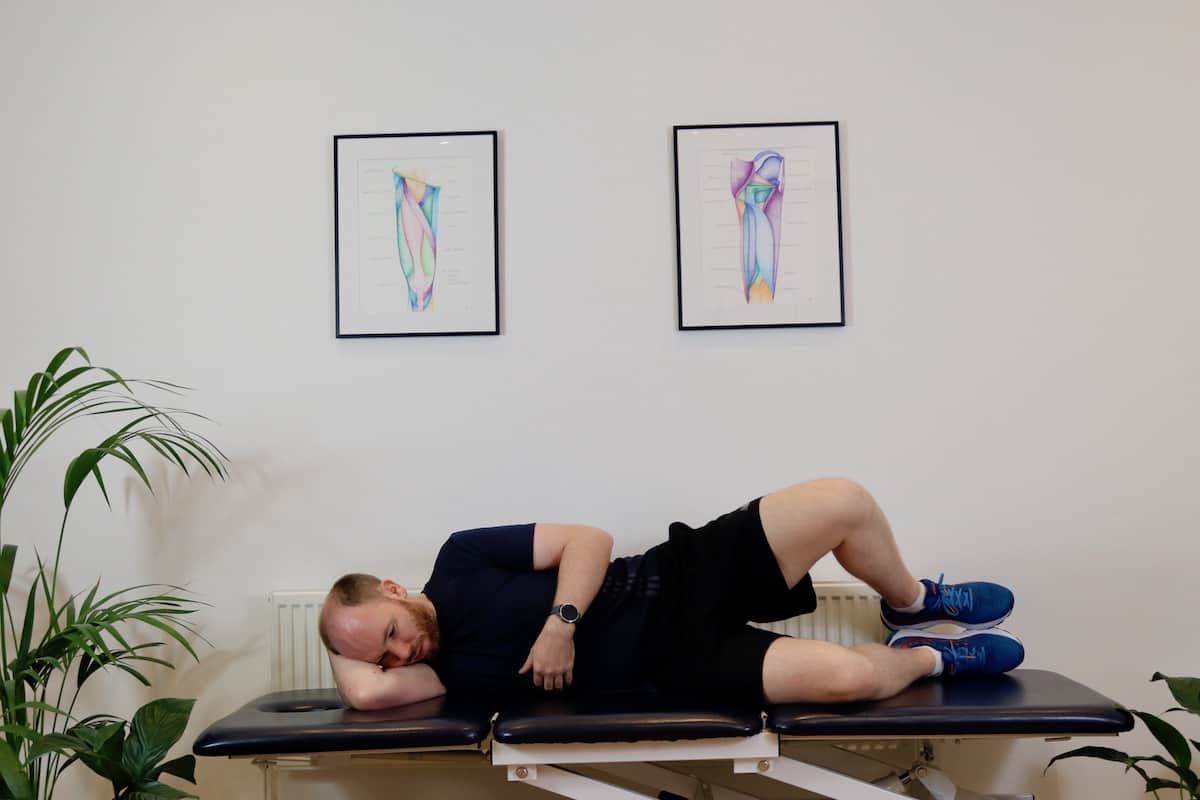
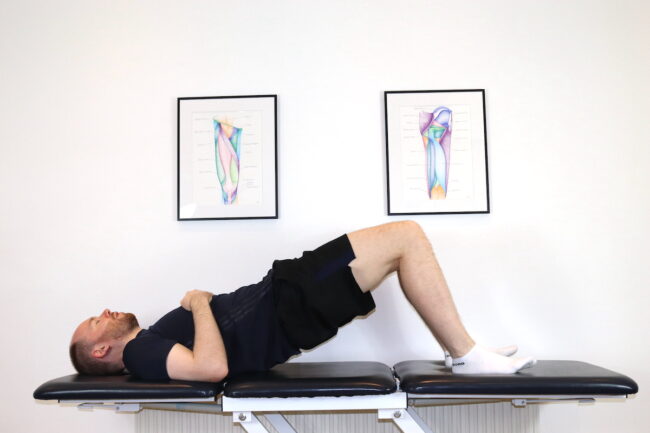
Lying on your back with your feet slightly wider than hip-width apart, and your knees bent to about 90º. Tilt your pelvis backward to flatten your back against the floor and lift your tailbone up, continue lifting your tailbone and pelvis to peel off the floor.
You should feel your hamstrings and gluteal muscles working at the back of your thigh and at your buttocks.
Standing with your feet slightly wider than hip-width apart, with slightly bend knees at less than 10º bend. Holding a weight in your hand, bend from your hips to bow forwards, keeping your back straight. Squeeze your buttocks and push your pelvis forwards, by straightening through your hips to return to standing.
You should feel your hamstrings and gluteal muscles working at the back of your thigh and at your buttocks.
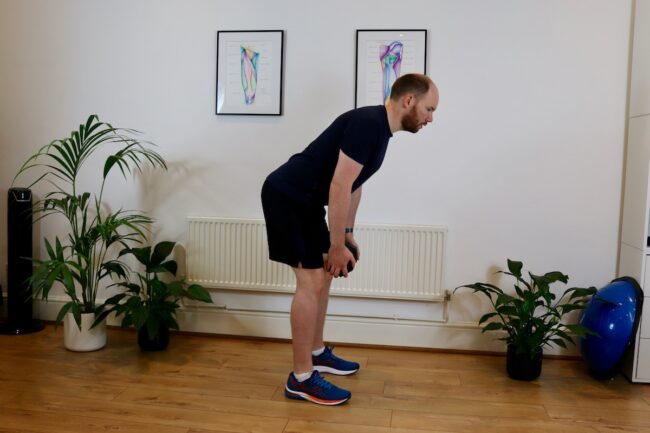
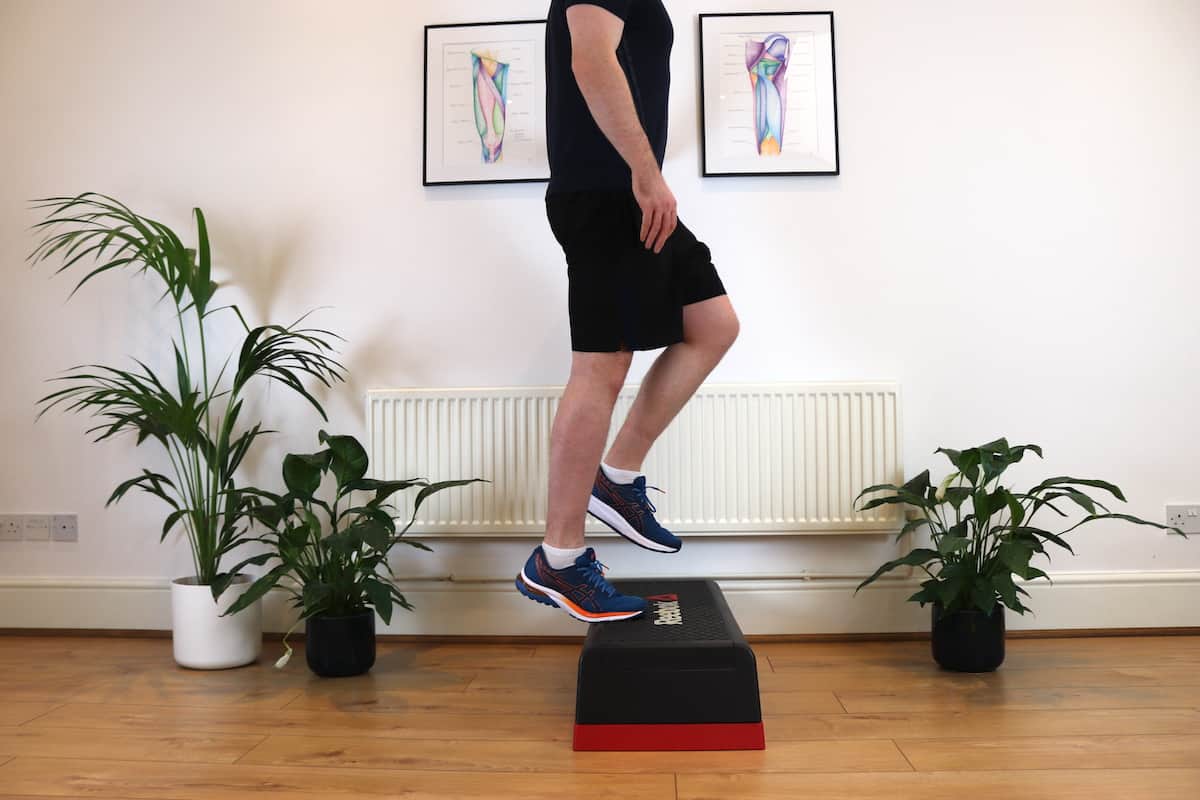
Standing on one leg with the ball of your foot on the edge of a step. Keep your knee straight while you lower your heel off the edge of the step, then lift your heel as high up as you can.
You should feel your calf muscles working at the back of your lower leg.
Stretching exercises for the iliotibial band are very important. But often mistakenly directed to the iliotibial band itself. Stretching the iliotibial band can increase pain. This is because stretching the band will increase compression on the fat pad. For many acute and irritable cases, this can aggravate symptoms.
It is more effective and with less risk of irritation to stretch the surrounding muscles. The iliotibial band inserts into, the quadriceps, gluteals, hamstrings, hip flexor, and calf.
Each stretch should be held statically for 45 seconds and repeated 3-6 times per day.
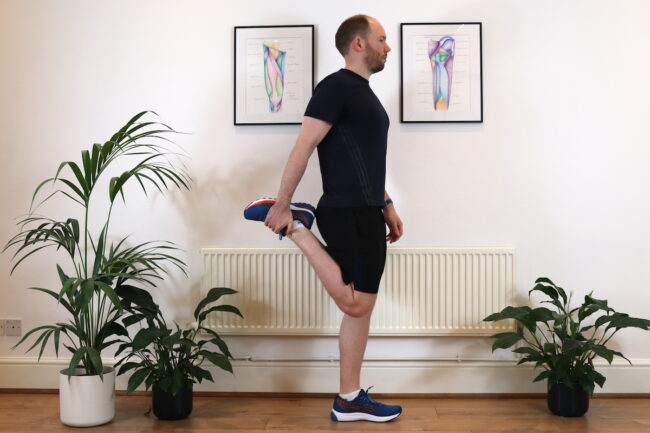
Standing on one leg, reach to hold your affected leg by the ankle. Push your hip forward, your knee backward and try to pull your ankle as close to your buttock as you can, to feel a comfortable stretch along the front of your thigh.
Lying on your back with one knee bent to 90º with your foot on the floor. Take your opposite leg and cross your ankle over your thigh. Pull your planted leg towards your chest as far as you can, to feel a comfortable stretch through the back and outside of your hip in your gluteal muscles.
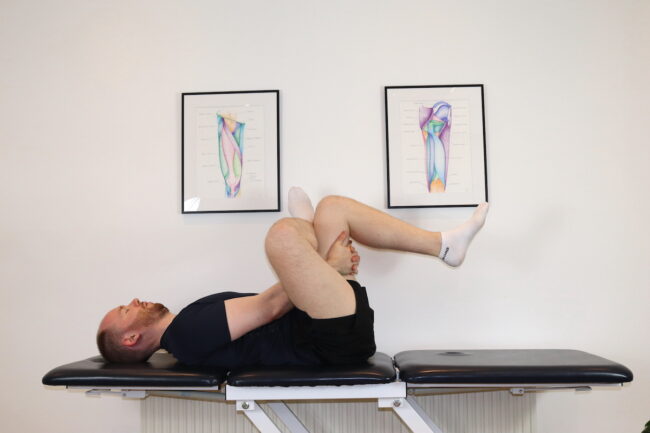
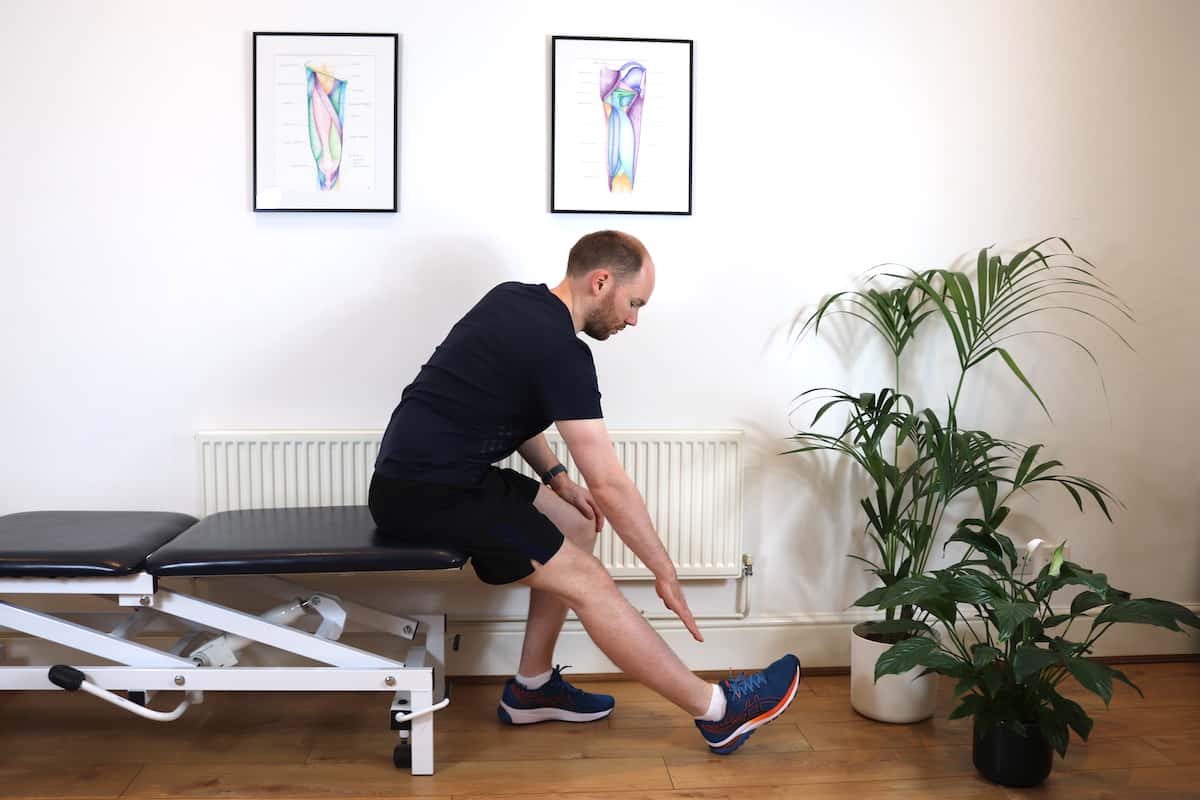
Sitting with one leg out in front of you, with a straight knee. As you straighten your back and lean forwards you should feel a stretch in the hamstring, at the back of your thigh of your outstretched leg.
Kneeling on the floor on one knee with the other leg stepped forwards, so you are in a lunge position. Keep your back straight and upright. Tilt your pelvis backwards, tucking your tailbone underneath you, then lean forwards into the lunge. You should feel the stretch in your hip flexor, at the front of the hip of the leg you are kneeling on.

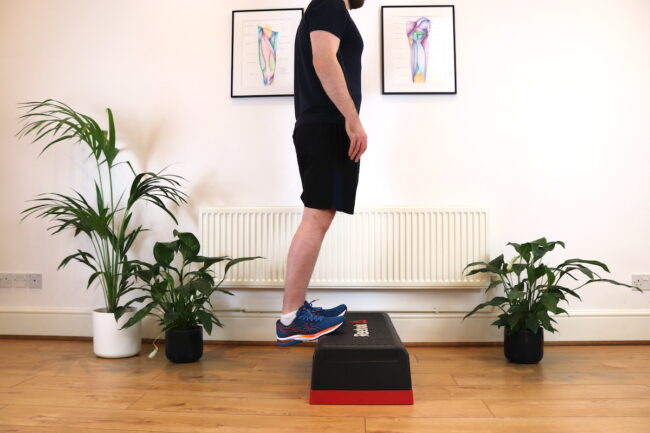
Stand with the balls of both feet on the edge of a step. Hold on for balance. Lower your heels as far as you can, to feel a comfortable stretch in your calves at the back of your lower leg.
Foam rolling the muscles that surround the iliotibial band is much more effective than foam rolling the iliotibial band itself. These include:
The band is a thick band of connective tissue and, therefore cannot be relaxed as muscles can. Applying pressure directly to the iliotibial band will increase the compression of the underlying fat pad against the lateral femoral condyle and may worsen the pain.
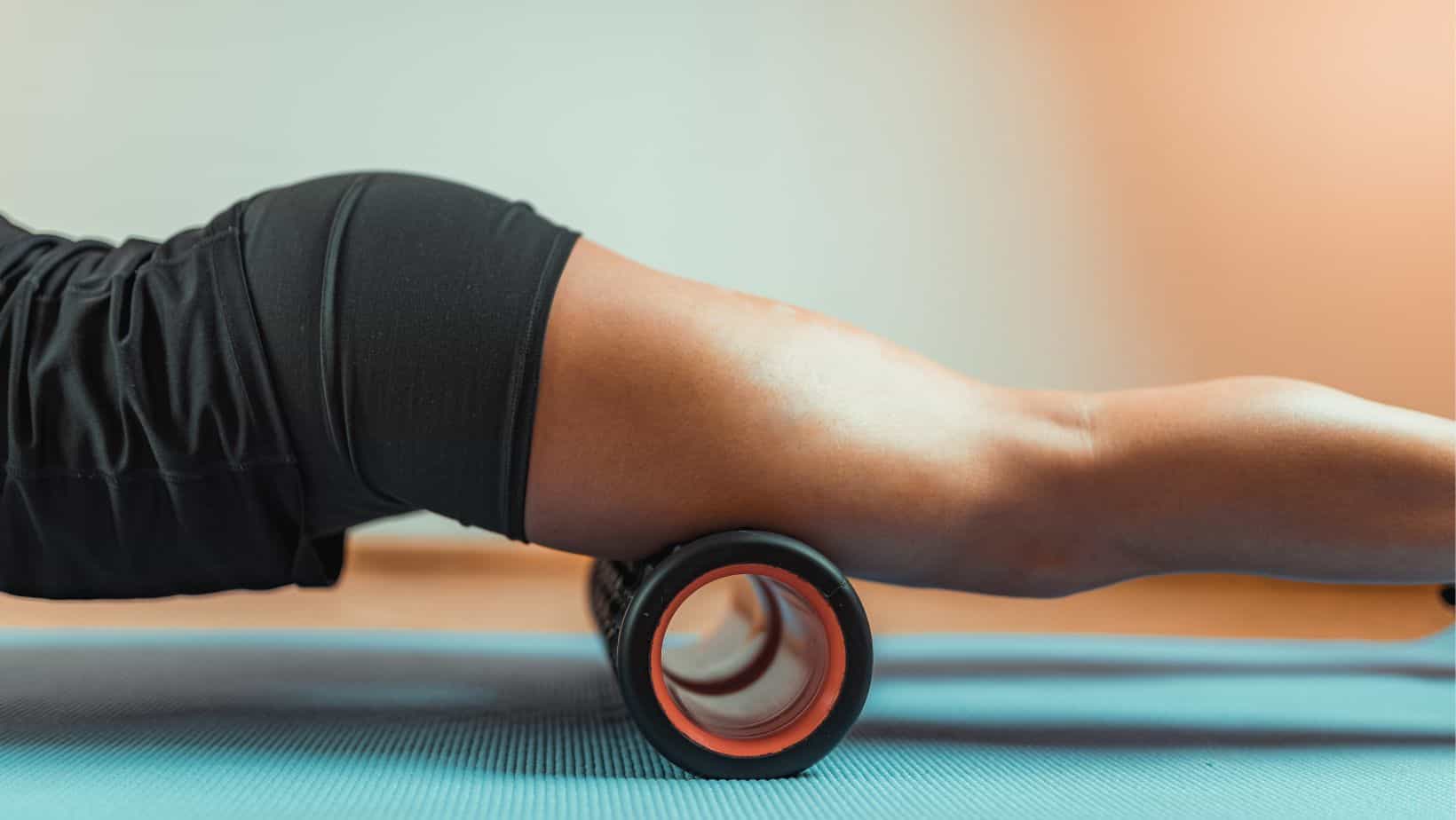
As important as knowing the right things to do, knowing what to avoid is essential. Running is, more often than not, going to aggravate pain. In most cases, it is to be avoided or at least reduced.
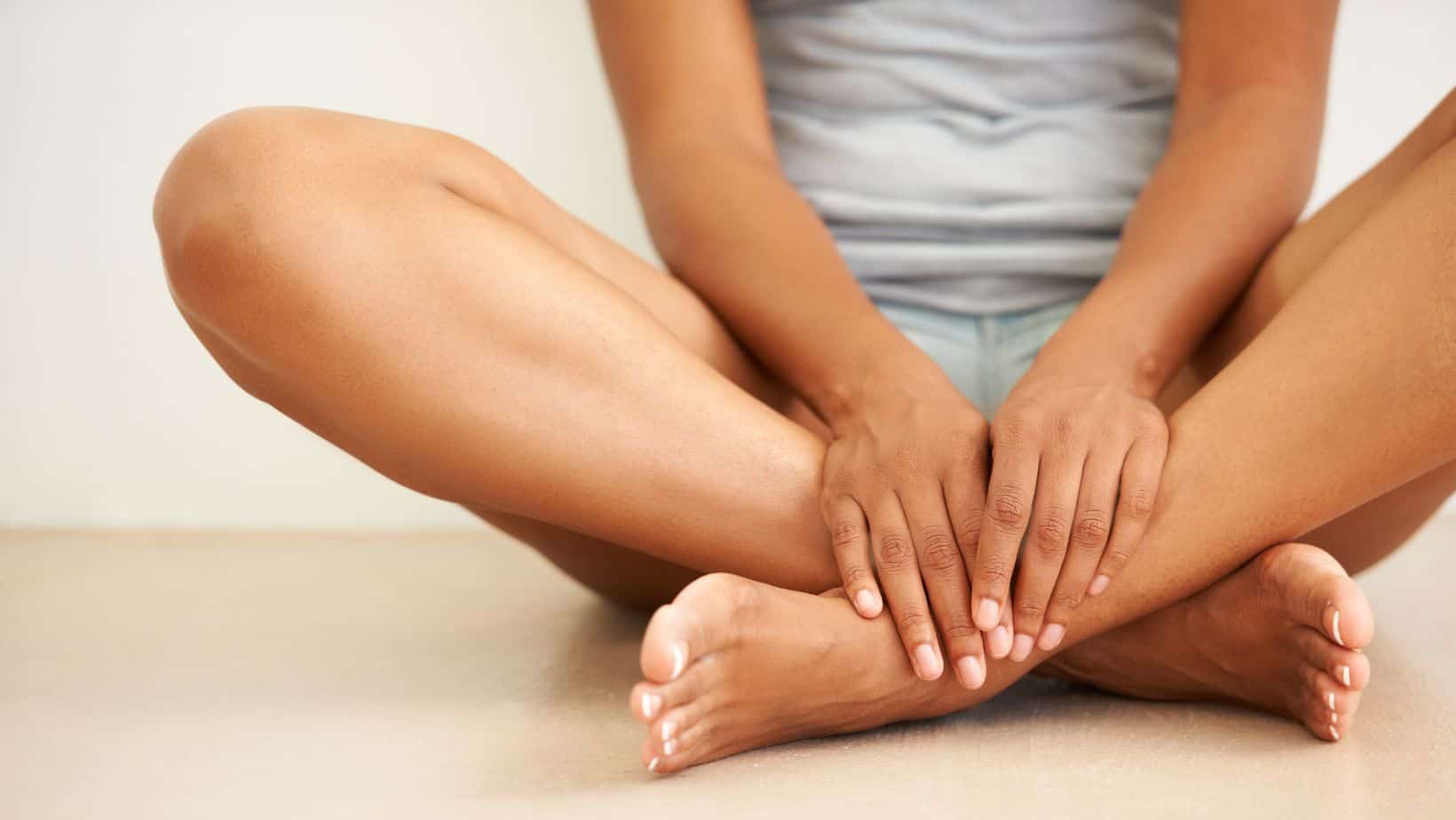
We often get asked if it is okay to continue to cycle. Cycling can aggravate symptoms, but not always. The best advice is that if cycling (or any other activity) brings on or worsens your pain you should stop or, at a minimum, reduce it.
Some positions, like sitting cross-legged on the floor, will tension the IT band and can aggravate pain. Others that are common are standing with a dropped hip. These can be hard to avoid, as are often habits. However, it is worth trying to avoid or reduce the time you spend in these positions.
This article is written by James McCormack, a Lower Limb Specialist who is an expert in treating Knee Pain.
This is not medical advice. We recommend a consultation with a medical professional such as James McCormack if you are experiencing any of the symptoms discussed in this article. James offers Online Physiotherapy Appointments weekly and face-to-face appointments in his London clinic.